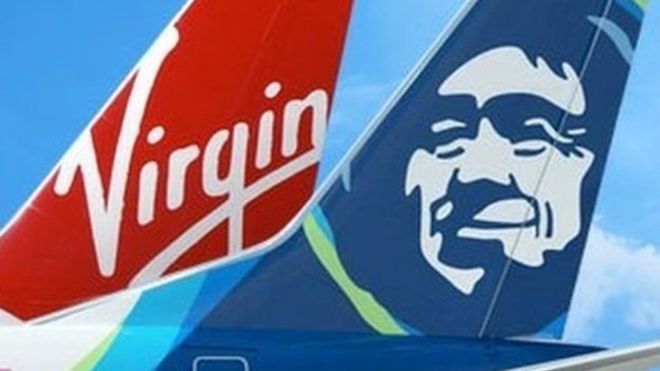Mileage-based programs are dead. Really?

23 December 2016
Alaska Airlines and Virgin America might be about to merge, but the more interesting news comes actually from looking at Alaska Airlines and Virgin Atlantic. They both show how sticking to a mileage currency can still work.
Both Virgin Atlantic and Alaska Airlines have recently announced major revamps of their respective programs, Flying Club and Mileage Plan. And at the same time, they have both resisted to the current market trend to switch to a revenue basis by applying a similar approach.
This is even more interesting as both airlines are not really in danger of being suspected to have collaborated very closely on that issue: Alaska Airlines is about to sever its ties with Delta Air Lines as a result of the latter’s expansion in Seattle, which controls Virgin Atlantic (itself now also serving Seattle). The fact that Alaska is merging with Virgin America might add some confusion to the picture, but it might be rather seen as a late proof that Virgin Atlantic is really not involved that much in Virgin America as critics wanted to suggest when the airline was launched since otherwise that merger would hardly have gone through now. While Alaska Airlines also maintains partnerships with many international airlines, British Airways, Virgin’s enemy number one, is one of its closest allies.
When Delta launched its revenue-based scheme at SkyMiles two years ago, many so-called experts predicted that this would be the model of the future and within two years, everybody would have followed. Two years later, United and American have indeed followed, but otherwise the examples are very rare. LATAM is one of the latest and most prominent examples to have followed, but only some 15% of all FFPs work today on a revenue basis. Most of them did actually already so before Delta and are usually found in the low cost arena and among niche programs. It might even be a bit audacious to call a program like SkyMiles really revenue-based if points on 32 out of 33 airline partners in the program are still accrued on a mileage-basis.
So history has not only proven all these experts wrong, but both Alaska and Virgin Atlantic have also shown through their recent program revamps how easily the undeniable advantages of revenue-based programs – to reward the high-spender more – can be incorporated into a mileage-based scheme.
They have simply put to the wall the unwritten rule among programs that Business Class credit should be at 125 or 150% of miles flown for American programs and between 150 and 200% for European programs. In the case of Alaska, this is even more remarkable as these changes don’t concern their own flights, but only those of its numerous international airline partners. A Mileage Plan member now earns up to 350% of miles flown in Business Class on British Airways and 225 or 250% on most other airline partners. On top of that, elite members earn a bonus of up to 125%. Only Delta’s closest friends in the program, Air France, KLM and Aeromexico, didn’t see their accrual rates increase. Yes, if you are at war with Delta, you can’t be close friends with some others either!
Over at Virgin Atlantic, the changes apply only to its own flights, creating on the way quite a gap towards its airline partners in the program (including Delta). Here, Flying Club members now earn up to 400% of miles flown in Upper Class – as top elite member even up to 640%, taking into account the elite bonus. Almost 70,000 miles for a top tier member flying roundtrip at a higher Upper Class fare from London to Los Angeles – enough for two off-peak reward flights in Economy Class on the same route or for one Economy Class award flight on Singapore Airlines from Europe to Southeast Asia. This is simply industry record.
There is no doubt that these changes create unseen value for high-end customers, letting them even better perform than with revenue-based programs. At the end of the day, it is not the currency that matters, but the maths you apply to reward your best – and all other – customers. Revenue-based programs have set a new standard here by the nature of their proposition. But both Alaska and Virgin Atlantic are demonstrating how you can reach the same objective with a mileage currency by some unconventional approach.
At the end of the day, loyalty might be more than just a question of currency?
In conclusion, there are two good news for 2017.
For program operators, there is no need to follow some fashion if it doesn’t really make business sense for you. With some logical thinking, you can always find a solution being better adapted to your particular situation. The combination of the answers to the three main questions (Where are you? Where do you want to get? How do you get there?) risks being individual – so should be your solution to your problems.
For frequent flyers, these two latest major program changes have both enhanced the value of the programs. Significantly for the high-spenders, but still fair enough for other members as well. The worst in terms of program cutbacks might be over.
Happy 2017!







